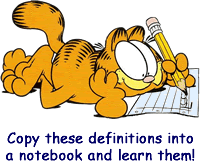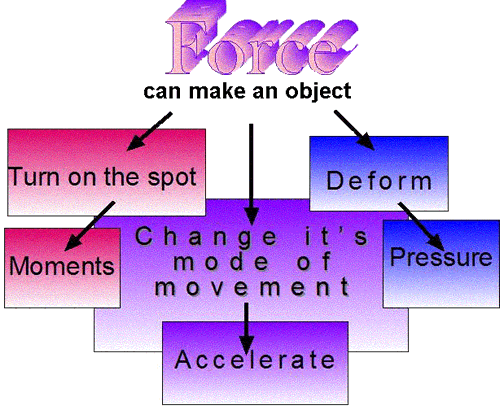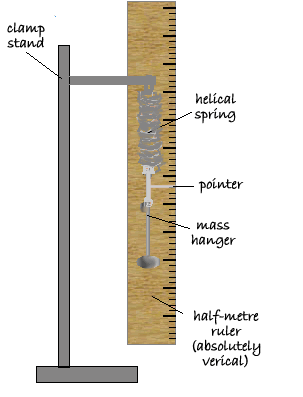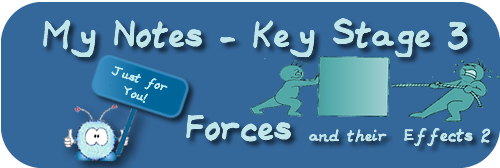|
|
|||||||||||
 |
At Primary School I learnt that:
|
 |
|
An experiment to investigate the stretching of springs |
|

Method The equipment was set up as shown in the diagram. A clamp stand was used to support a half metre ruler. The ruler was carefully viewed from all angles to ensure that it was vertical. A spring was fixed onto a screw of the clamp stand equipment and a mass hanger was suspended under it. A reading was taken of the position of the base of the hanger from the rule. This was noted down. The mass hanger had to be perfectly still before this reading was taken and care was taken to avoid parallax error when reading the value from the ruler. A sheet of paper was used to help with this, but care had to be taken not to disturb the hanger. A 20g mass was then carefully slotted onto the hanger and the reading of the position of the base of the hanger was recorded as before. This was repeated with more 20g masses until 200g had been added to the hanger. The whole experiment was repeated after adjusting the position of the ruler to avoid 'repeat' errors (looking for the value from the previous set of results!) The results were recorded in a table and the total extension for added mass was calculated. A graph was plotted of the mass added to the hanger against the extension of the spring. Both sets of results were plotted on the one graph so that the scatter of the results could be seen. This would be useful in indicating how precise the readings had been. |
|
Follow me...







